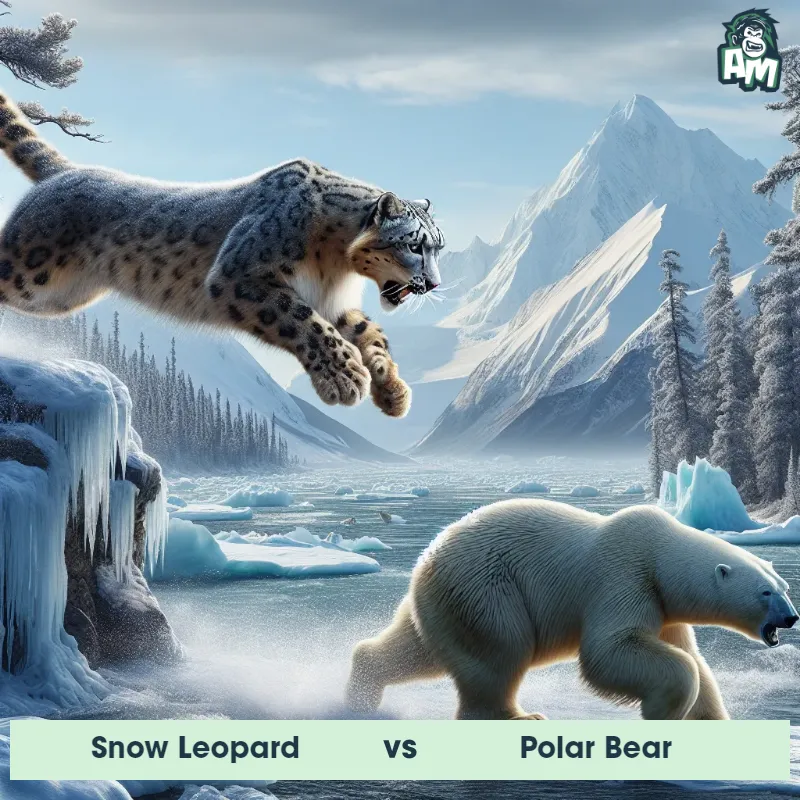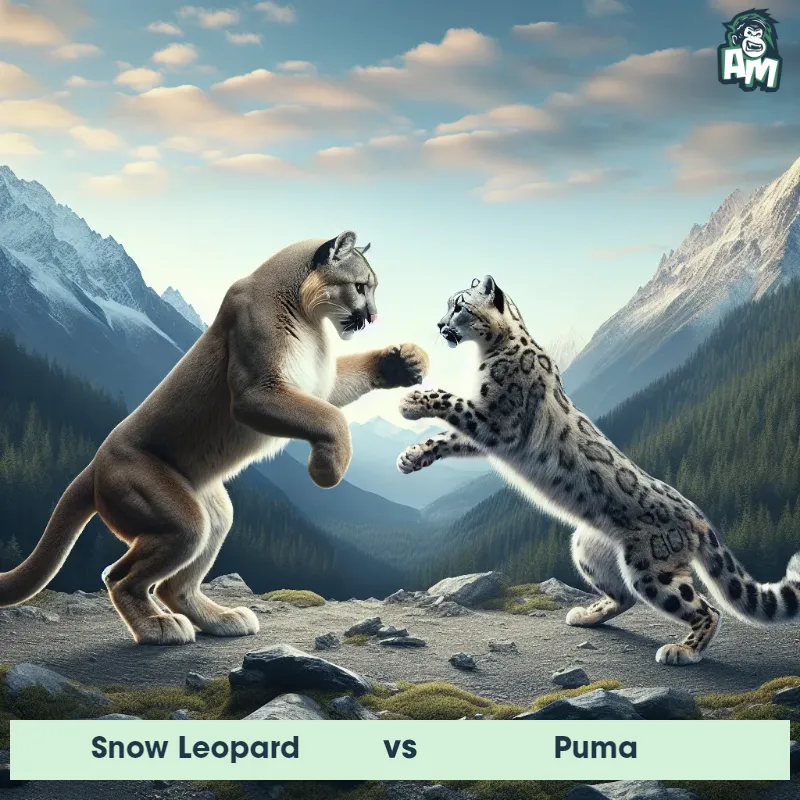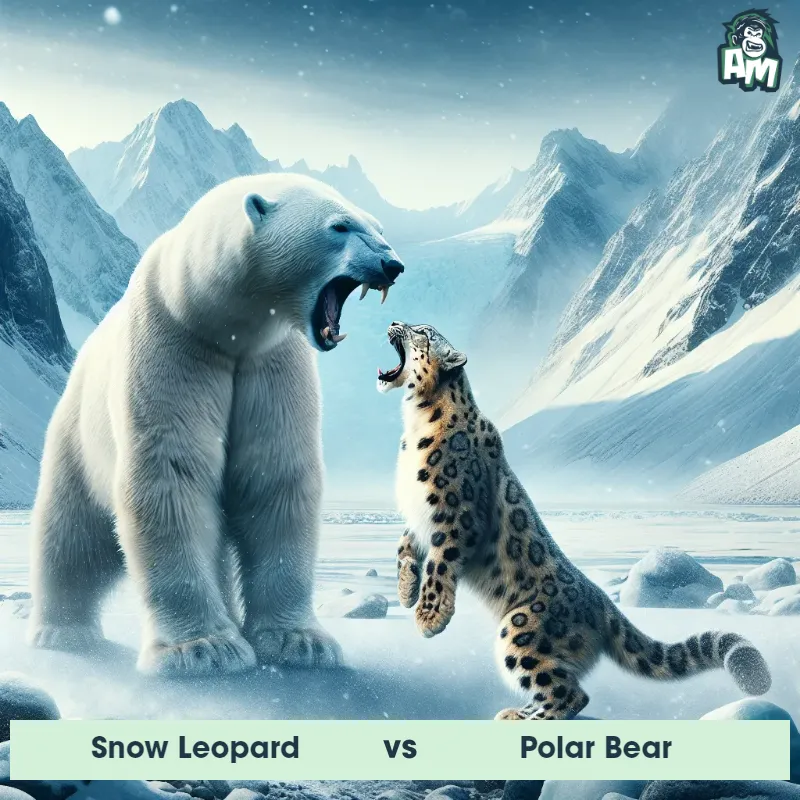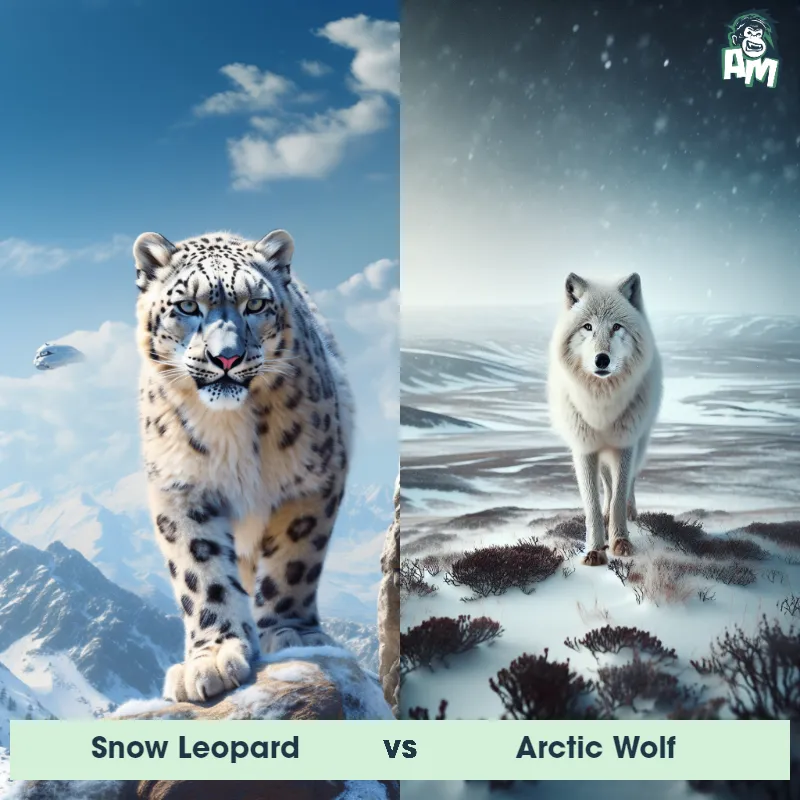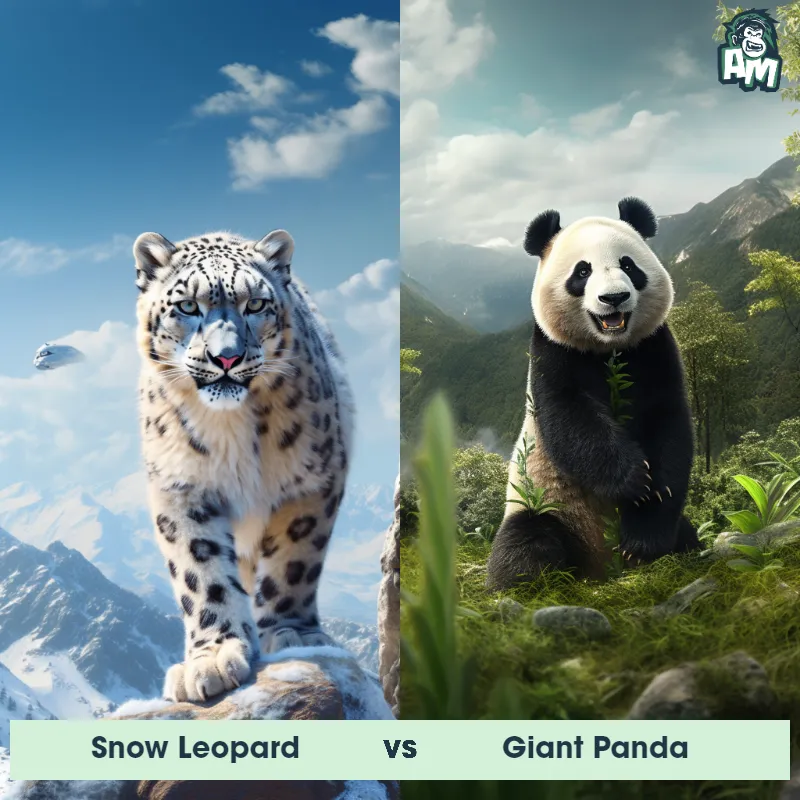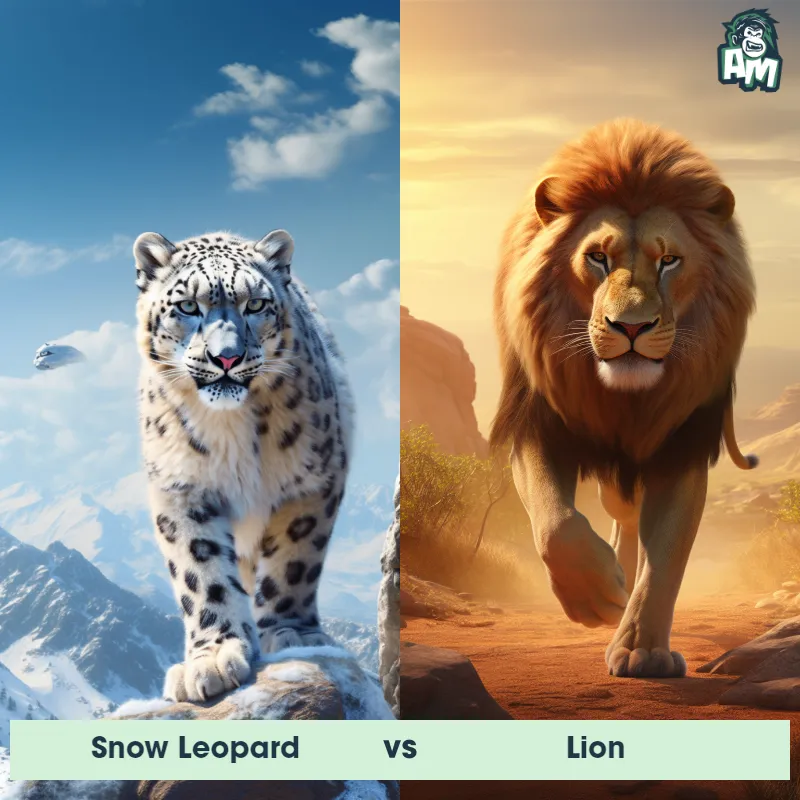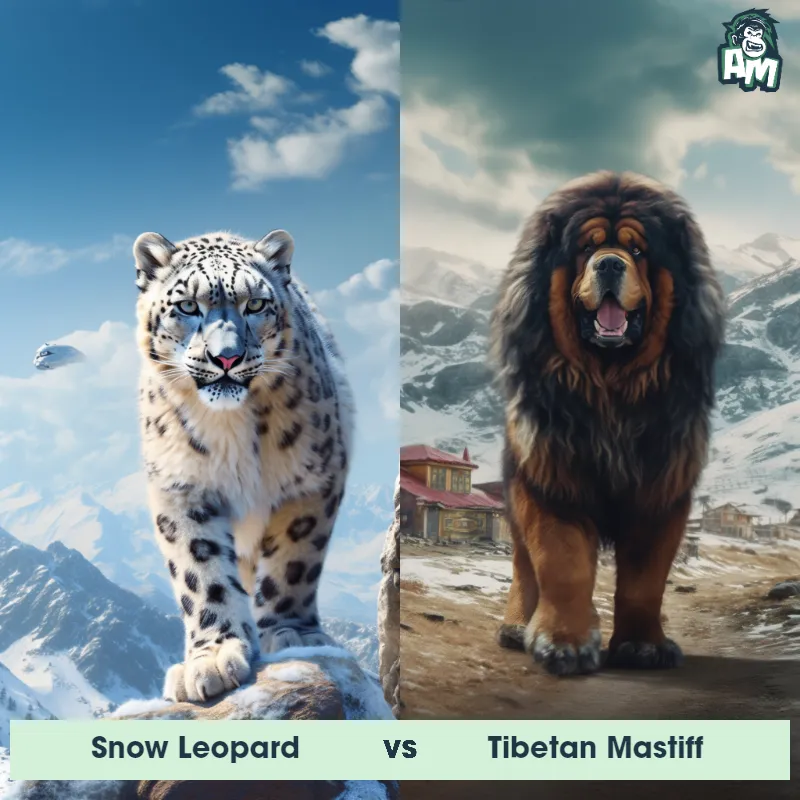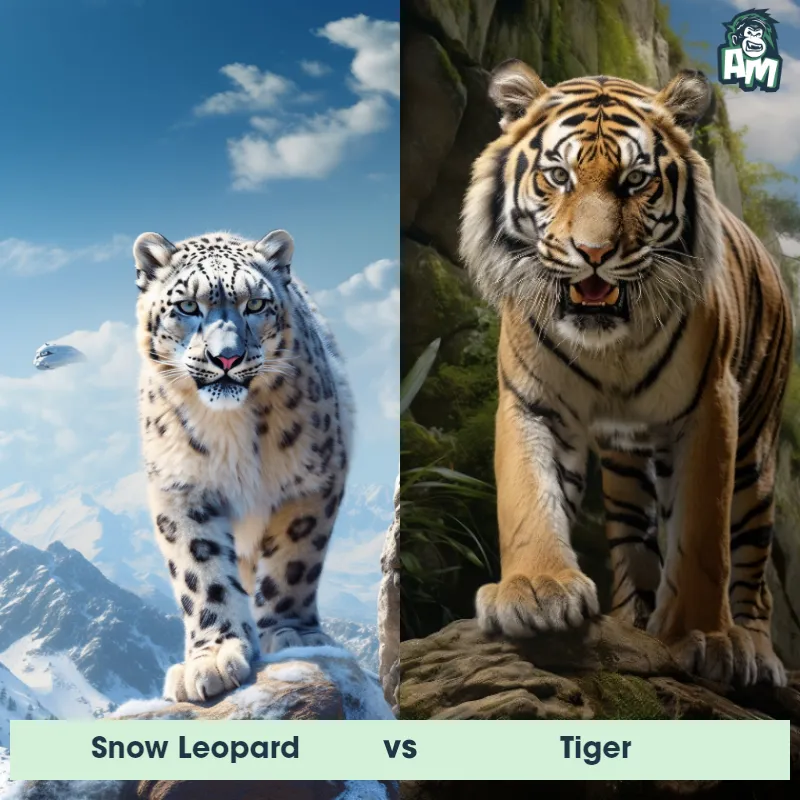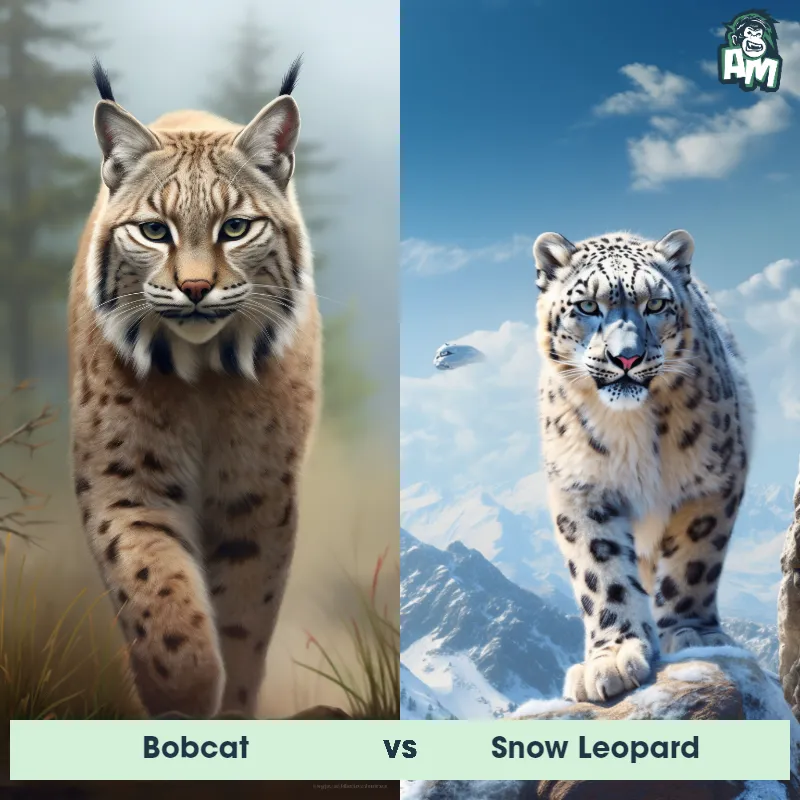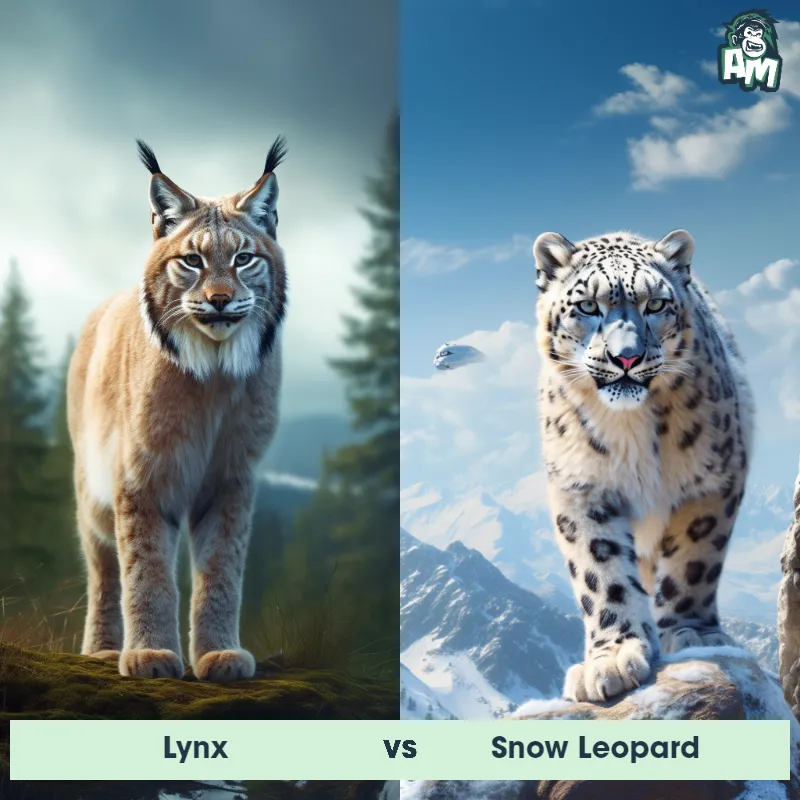The Snow Leopard
The Snow Leopard, scientifically known as Panthera uncia, is an elusive and majestic big cat, native to the rugged mountain ranges of Central and South Asia. It is known for its pale gray or light tan coat adorned with dark rosettes and spots, which help it blend seamlessly into its snowy habitat. With a muscular body and long, thick tail, the snow leopard possesses exceptional agility and balance. It has short front limbs and long hind limbs, enabling it to leap great distances and navigate steep, rocky terrains with ease. This highly endangered species is not only an apex predator but also plays a crucial role in maintaining the biodiversity of its ecosystem.

| Snow Leopard | |
|---|---|
| Size | 2-2.5 feet (60-75 cm) at the shoulder |
| Weight | 60-120 pounds (27-54 kg) |
| Speed | Speed: 40 mph (64.37 km/hr) |
| Key Strength | Powerful legs and sharp claws |
| Biggest Weakness | Vulnerable to larger predators |
| Scientific Name | Panthera uncia |
| Family | Felidae |
| Habitat | Mountain ranges |
| Geography | Central and South Asia |
| Diet | Mainly wild sheep and goats |
| Lifespan | 10 years - 12 years |

The Snow Leopard
The Snow Leopard, scientifically known as Panthera uncia, is an elusive and majestic big cat, native to the rugged mountain ranges of Central and South Asia. It is known for its pale gray or light tan coat adorned with dark rosettes and spots, which help it blend seamlessly into its snowy habitat. With a muscular body and long, thick tail, the snow leopard possesses exceptional agility and balance. It has short front limbs and long hind limbs, enabling it to leap great distances and navigate steep, rocky terrains with ease. This highly endangered species is not only an apex predator but also plays a crucial role in maintaining the biodiversity of its ecosystem.
Fun Fact: One fascinating fact about the Snow Leopard is that its powerful hind limbs allow it to jump up to 30 feet in a single bound, making it the highest-jumping cat in the world.
| Snow Leopard | |
|---|---|
| Size | 2-2.5 feet (60-75 cm) at the shoulder |
| Weight | 60-120 pounds (27-54 kg) |
| Speed | Speed: 40 mph (64.37 km/hr) |
| Key Strength | Powerful legs and sharp claws |
| Biggest Weakness | Vulnerable to larger predators |
| Scientific Name | Panthera uncia |
| Family | Felidae |
| Habitat | Mountain ranges |
| Geography | Central and South Asia |
| Diet | Mainly wild sheep and goats |
| Lifespan | 10 years - 12 years |
Match Highlights
Snow Leopard Matchups
We use AI to simulate matchups between the Snow Leopard and other animals. Our simulation considers size, strength, and natural predatory behaviors to determine the most likely outcome.

Can't find the Matchup you want?
Create Your Own MatchupSnow Leopard: Diet, Predators, Aggression, and Defensive Behaviors
What do Snow Leopards eat?
Snow Leopards primarily feed on wild goats, sheep, deer, and other small mammals like marmots and pikas. They are opportunistic hunters and often target prey that is typically larger than themselves. Due to their elusive nature, they are able to sneak up on their prey and pounce with great agility.
Do Snow Leopards have any predators?
While adult Snow Leopards do not have many natural predators due to their solitary and secretive nature, they can sometimes fall victim to larger predators such as wolves and bears. Cubs are more vulnerable and may be targeted by other predators like eagles.
Are Snow Leopards aggressive towards humans?
Snow Leopards are not typically aggressive towards humans unless provoked or threatened. They tend to avoid human contact and prefer to retreat when encountering humans in their natural habitat. However, like any wild animal, they may defend themselves if they feel threatened.
Do Snow Leopards fight with each other?
Snow Leopards are solitary animals and tend to avoid confrontation with others of their kind. However, conflicts may arise between individuals, especially during mating season or when competing for territory and resources. These interactions often involve vocalizations, posturing, and sometimes physical fighting.
How do Snow Leopards defend themselves?
Snow Leopards have several defenses to protect themselves from potential threats. They rely on their elusive nature and camouflage to blend into their surroundings and avoid detection. In situations where they are cornered or facing danger, they may growl, hiss, or snarl to scare off a threat. They also have sharp claws and powerful jaws that they can use in self-defense if needed.
What is the biggest weakness of Snow Leopards in a fight?
Despite being powerful predators, Snow Leopards have a relatively small and slender build compared to other big cats like tigers or lions. This makes them vulnerable in physical confrontations with larger and more aggressive animals. Additionally, their dependence on stealth and surprise as hunters can be a weakness in a direct confrontation where those tactics may not be as effective.
Fun Fact: Unlike other big cats, the Snow Leopard has a unique adaptation to protect its ears from the cold mountain winds – dense fur covers the insides of its ears, acting as a natural ear muff.
Fun Fact: Snow leopards possess long and bushy tails, which serve multiple purposes, including aiding balance while traversing treacherous terrain, acting as a blanket to cover their face during sleep, and storing energy as fat for times of scarcity.



